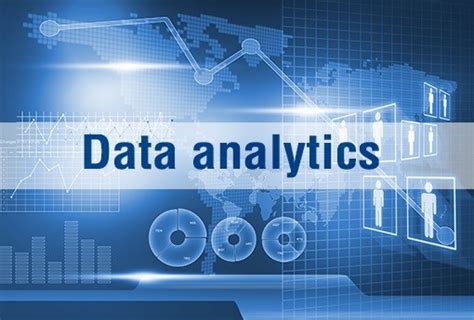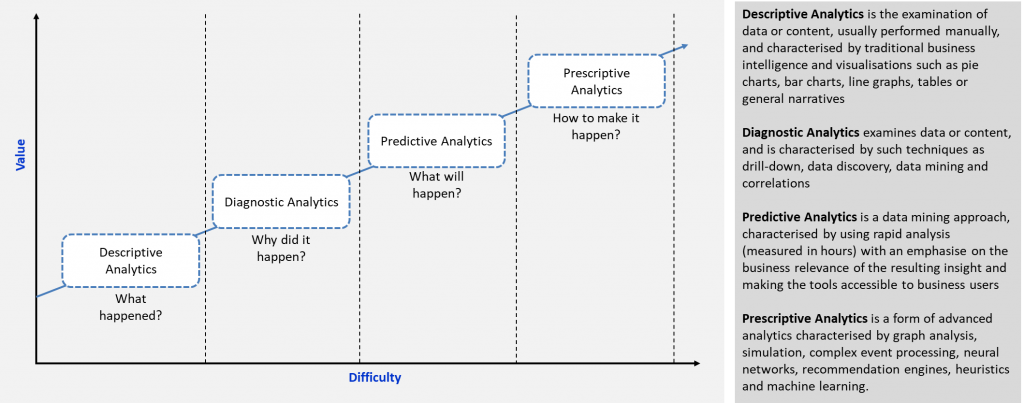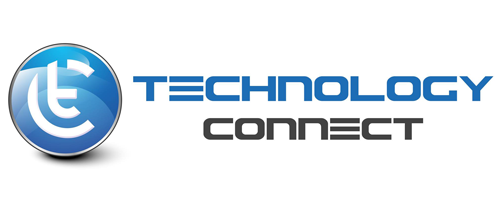

The Future of Procurement Analytics
Leading procurement teams use data analytics to exponentially increase the value they deliver
Companies across the world are facing continued pressure to improve productivity, accelerate transformation initiatives and deliver innovative digital platforms, products and services to keep up with rapidly changing business environments primarily driven by the Covid-19 pandemic. In this new economy, companies have an opportunity to address these challenges through better use of data science and analytics. With more than 50% of a company’s value chain dependent on third party suppliers, procurement can be a differentiating capability to establish and sustain a competitive advantage. However, many procurement teams are just beginning the data science and analytics journey[1].
At Technology Connect, we believe that data science and analytics is the future of procurement and those who first harness the power of this capability will become the leaders of their industry. Most procurement teams have been using data for many years to develop category plans and perform spend analysis. However, most procurement teams continue to focus on Descriptive Analytics, using data points to explain what happened (see Figure 1 below) or Diagnostic Analytics, to explain why and how something happened. The leaders are going beyond these levels and using data for Predictive Analytics, to identify patterns, build algorithms and data products to forecast the probability of scenarios occurring again, and even Prescriptive Analytics, to understand which levers to change to improve predetermined business outcomes.
Figure 1: Data Analytics Journey
Source: Gartner, Technology Connect Analysis
However, many companies are just starting to climb the Value axis in Figure 1 above and these capabilities are not easy to build. 86% of Chief Procurement Officers (CPOs) believe that they lack the platforms to access good quality data – both internally and externally. As a result, only 10-20% of available procurement data is leveraged to drive decision making and action.[2]
To accelerate this journey, procurement teams must invest in data and analytics talent and technology ranging from data extraction (from organisational source systems), load and transform (ELT) such as Snowflake, query automation and automatic report generation such as Alteryx and DataRobot, to analytics solutions such as Qlik, Tableau or PowerBI.[3]
In conjunction with this traditional data analytics journey from Descriptive Analytics to Predictive Analytics, leading companies are leveraging external data to enrich their Predictive and Prescriptive Analytics. This is particularly the case for supplier financial health and operational risk related data, e.g. geopolitical risk, dual-sourced status, supplier lead time etc. When combined with internally available supplier data, these procurement teams are able to create supplier risk-monitoring dashboards and thereby proactively manage organisational resilience.
Moving to the next level of sophistication is data sharing amongst organisations. This is not yet a prevalent activity for procurement teams, but has been going on in other business domains for several years. An example of data sharing is the Australian Financial Crimes Exchange that act as a hub for financial services organisations to share fraud related data to enrich their internally available data to enhance their collective capabilities to identify suspicious matters, and ultimately help society to reduce financial crime. Although data sharing is not yet on many CPO investment radars, there are obvious benefits for organisations in sharing data to increase business value. Using the risk example above, procurement teams in various organisations could potentially start by sharing supplier risk profiles, i.e., the risk mitigation factors used to manage supplier risks, and once they get more comfortable with data sharing, they can move to sharing of transaction data. Getting to this level of sophistication require procurement teams to ensure that data sharing complies with supplier confidentiality obligations and relevant regulation, e.g. data and privacy. The details of data sharing is beyond the scope of this post, but future Technology Connect posts will go into further details on data sharing trends and leading practices that are applicable to procurement (and beyond), including emerging privacy enhancing technology (PET), scalable analytics methods and data security architecture.
Data and analytics is the future of procurement. Leading teams are already using data analytics to create a winning differentiating capability and will be performing significantly better that companies that do not use and continuously invest in this capability. For most organisations, the time to act is now!
Notes:
[1] Accenture: Getting Insights From Data, July 2020.
[2] McKinsey & Co: Disrupting Procurement Through Analytics, May 2021.
[3] These are just examples of data and analytics solutions, there are many other options commercially available and the appropriate architecture will depend on the desired strategic outcomes, competitive dynamics, organisational size, IT architecture, in-house capabilities etc.
Tom Dissing is the founder and Managing Director of Technology Connect. He has deep expertise in helping companies digitally transform and scale their businesses through better, faster and smarter use of emerging technology and optimising value from ecosystems of supplier capabilities. Tom is a trusted advisor to procurement, technology and finance executives and senior management teams. He has advised senior executives in Financial Services (Banking, Insurance, Wealth and Superannuation), Media & Entertainment, Construction & Engineering, Technology Services and Government (Federal and State) in Australia, New Zealand, Asia and Europe.
Copyright © 2021 Technology Connect. All rights reserved.



